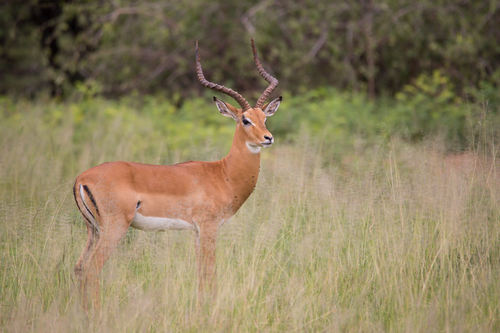
Impala
The impala, Aepyceros melampus, dazzles with its agility and striking black markings. Thriving in African savannas, this social antelope forms large herds and gracefully leaps to evade predators, playing a crucial role in the ecosystem by maintaining grassland dynamics.
12-15 years
Lifespan
37.0 - 75.0 kg
Weight
Brown, White, Tan
Color
50 mph
Top Speed
Least Concern
Conservation Status
Stable
Population Trend
Characteristics
Aepyceros melampus, commonly known as the impala, is a medium-sized African antelope known for its graceful agility and striking appearance. It features a reddish-brown coat with lighter underparts and distinctive black facial markings. Impalas are highly social, forming herds that roam the savannas and woodlands. Their incredible leaping ability, reaching heights of 3 meters, aids in evading predators.
Distribution Range of the Impala
Aepyceros melampus, commonly known as the impala, is native to eastern and southern Africa. Its geographical distribution includes countries such as Kenya, Tanzania, Mozambique, Namibia, Botswana, Zimbabwe, Zambia, South Africa, Angola, and Uganda. The species is predominantly found in savanna and woodland regions across these countries.
Impala's Habitat
Environmental Conditions
Impalas typically inhabit savanna grasslands and light woodlands. These environments are characterized by a mix of open plains with scattered trees and shrubs. The climate in these regions is generally warm with distinct wet and dry seasons. Rainfall patterns vary, but the presence of water sources like rivers and waterholes is crucial for their survival.
Ecological Niche
Impalas occupy an ecological niche as medium-sized herbivores, primarily grazing on grasses but also browsing on shrubs and bushes. They are well-adapted to their environment, capable of digesting a variety of plant materials. This flexibility allows them to thrive in areas where vegetation availability fluctuates with seasonal changes. Impalas also play a vital role in their ecosystem as prey for large predators such as lions, leopards, and cheetahs.
Copyright @ Nature Style Limited. All Rights Reserved.
 English
English